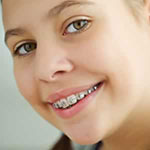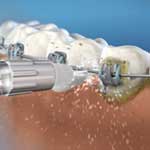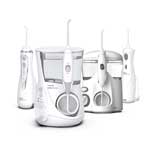
Using An Electric Toothbrush With Braces
Keeping teeth clean and white is a top priority when you wear braces. While manual brushing can be sufficient if done correctly, powered toothbrushes have features that make the job easier, faster, and more effective. And they won't damage delicate braces, permanent retainers, and other orthodontic appliances.
Standard Electric Toothbrushes for Use with Braces
Standard electric toothbrushes generally brush teeth at speeds between 2500 and 7500 strokes per minute. Given that you manually brush at 300 strokes per minute, two minutes with an electric toothbrush delivers far more cleaning power in that short time.
Sonic and Oscillating Toothbrushes Are Safe for Braces
Sonic toothbrushes are like electric toothbrushes, except that they brush at very high speeds—30,000 strokes per minute or more. They're ideal for braces because they easily clean out food and bacteria trapped around brackets and elastics, and under wires. Even better, clinical research shows that the SensonicTM electric toothbrush helps protect against gingivitis, cavities, and bad breath by removing up to 4X more plaque than manual brushing in hard-to-reach areas.
Electric or Sonic: Choosing a Toothbrush for Use with Braces
Electric toothbrushes offer a variety of features:
- Rotating (spinning) oscillating brush head
- Back-and-forth oscillating brush head
- Variable modes and speed settings
- Interchangeable brush head types
- Rechargeable battery
- 2-minute timer with 30-second pacers
Sonic toothbrushes offer similar features, but differ from electric toothbrushes in two key ways: brush speed and motion. Instead of spinning or moving back and forth with broad strokes, they vibrate at high frequencies using sonic technology. These super-fast movements brush the tooth surface at least one hundred times more than manual brushing can in every minute. They also stir up or agitate the water in your mouth and the plaque on your teeth, making it easier to rinse away harmful bacteria. This beyond-the-bristles clean is hard to match with manual brushing.


